Gallatin National Forest
- January 22, 2024
- 0 comment
Gallatin National Forest is a sprawling expanse of nature’s finest work, located in the rugged beauty of southwestern Montana, covering over 2.3 million acres. Established in 1899, this natural haven boasts a rich history intertwined with the cultural tapestry of the American West. The forest is a mosaic of towering mountain ranges, including parts of the Madison and Gallatin ranges, and is home to an abundance of wildlife, from grizzlies and wolves to majestic bald eagles.
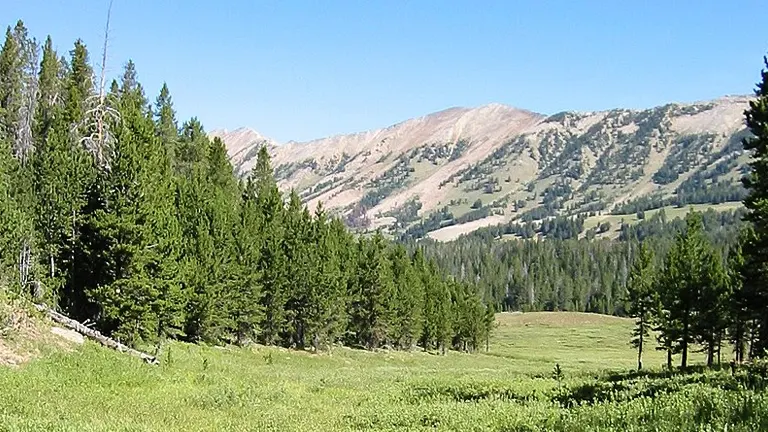
Its diverse landscape of dense forests, alpine meadows, and rushing rivers offers a playground for outdoor enthusiasts, with activities ranging from hiking and skiing to fishing and camping. Beyond recreation, Gallatin is a testament to conservation efforts, balancing ecological integrity with human enjoyment. It also holds significant cultural value, embodying the spirit of exploration and preservation cherished by local communities and nature lovers alike.
Characterizing Features of Gallatin National Forest
- Vast Size and Diverse Landscapes: Encompassing over 3.4 million acres, the Custer-Gallatin National Forest is marked by its vast size. This expansive area includes a diverse range of landscapes from rugged mountain ranges like the Gallatin, Madison, Bridger, Crazy, Absaroka, and Beartooth ranges to the remote buttes and pine savannahs of southeastern Montana and South Dakota. Each landscape within the forest presents its own unique ecosystem, contributing to the overall biodiversity and ecological significance of the area.
- Proximity to Yellowstone National Park: A defining feature of the Gallatin National Forest is its adjacency to Yellowstone National Park, making it a crucial part of the Greater Yellowstone Ecosystem. This proximity creates a natural corridor for wildlife, allowing free movement and migration, which is vital for maintaining genetic diversity and robust populations. It also enables visitors to experience a continuum of natural beauty from the national park into the national forest.
- Rich Biodiversity: The forest is a haven for a wide array of wildlife and plant species. It supports over 300 wildlife species, including iconic animals like the grizzly bear, bald eagle, and peregrine falcon, and serves as a habitat for threatened species such as the Canada lynx. The vegetation ranges from lower elevation grasses and sagebrush to higher altitude forests dominated by Douglas fir, spruce, and aspen, creating a varied tapestry of plant life across different elevations.
- Historical and Geological Landmarks: The Gallatin National Forest is home to significant historical and geological features. Notably, the 1959 earthquake near Yellowstone led to the formation of Quake Lake, a striking reminder of the dynamic natural forces shaping the landscape. Additionally, the forest’s rich cultural history, from its Native American heritage to its naming after Albert Gallatin, adds depth to its character.
- Recreational Paradise: Offering a multitude of recreational activities, the forest is a paradise for outdoor enthusiasts. With over 2,290 miles of hiking trails, numerous campsites, and access to “blue ribbon” trout streams, it caters to hikers, campers, anglers, and winter sports aficionados. This blend of recreational opportunities, coupled with its natural beauty, makes Gallatin National Forest a premier destination for nature-based tourism and adventure.
- Conservation Efforts: The forest is actively involved in conservation efforts, balancing ecological integrity with human enjoyment. These efforts are exemplified by projects like the collaboration with Hawk Watch International at the Bridger Mountains Raptor Migration Project, showcasing the forest’s commitment to preserving its natural inhabitants and their habitats.
Each of these features contributes to the unique character and appeal of Gallatin National Forest, making it not just a remarkable natural area but also a vital resource for conservation, recreation, and education.
History
The Gallatin National Forest, now an integral part of the Custer-Gallatin National Forest, has a storied past that stretches back to its establishment in 1899. Originally a part of the Northern U.S. Forest Service, it was named in honor of Albert Gallatin, the U.S. Secretary of the Treasury known for his scholarly interest in Native American cultures and languages. This naming underscores the forest’s deep historical connections to the cultural tapestry of the American West and its role as a significant crossroads for various Native American tribes. Over the years, the Gallatin National Forest has been a witness to the evolving American landscape, both in its natural ecosystems and its cultural narratives.
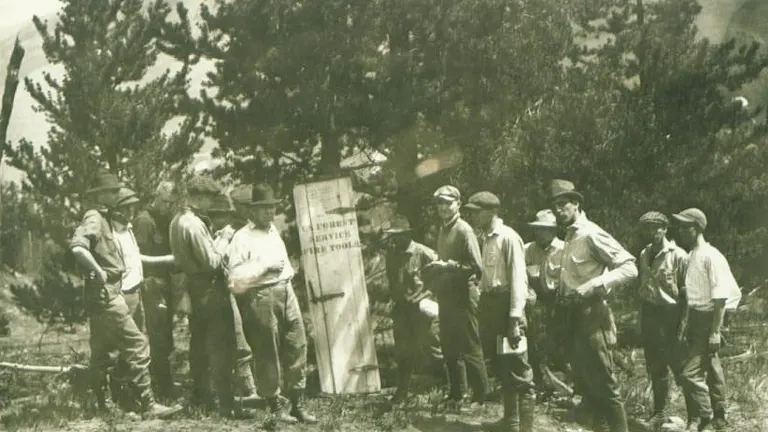
A key event in the forest’s history was the 1959 earthquake near Yellowstone National Park, which led to a massive landslide and the creation of Quake Lake. This event reshaped not only the physical landscape but also became an integral part of the forest’s geological story, marking a significant chapter in its natural history. In response to changing environmental and administrative needs, the Gallatin National Forest was merged with the Custer National Forest in 2014, a strategic decision aimed at more effective resource management. This merger and the subsequent creation of a unified management plan in 2020 reflect a modern approach to balancing conservation and recreational use. The history of the Gallatin National Forest, thus, is not just a tale of the past but a continuous narrative, echoing the evolving relationship between humans and their natural environment.
Importance in Conservation and Recreation in Gallatin National Forest
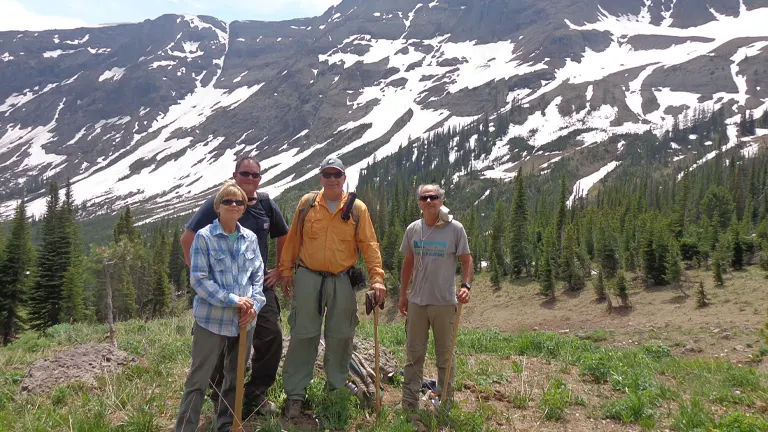
The Gallatin National Forest, a crucial part of the Custer-Gallatin National Forest, stands as a vital area for conservation and a popular destination for outdoor recreation. As an integral component of the Greater Yellowstone Ecosystem, it plays a key role in biodiversity preservation, providing habitat for various species, including the grizzly bear and Canada lynx. The forest’s vast network of trails, exceptional “blue ribbon” trout fishing, and opportunities for winter sports make it a haven for nature enthusiasts. This delicate balance of conservation and recreational access is central to the forest’s management, ensuring the protection of its natural beauty and ecological integrity for future generations, while enabling visitors to appreciate and engage with the natural world.
Unique Location of Gallatin National Forest

Strategically positioned at the crossroads of South-West Montana and North-West Wyoming, the Gallatin National Forest, now part of the Custer-Gallatin National Forest, occupies a unique and diverse geographical location. It spans from the rugged, alpine terrain of the Gallatin, Madison, and Beartooth mountain ranges to the remote buttes and expansive pine savannahs of southeastern Montana and South Dakota. This unique setting not only contributes to its rich biodiversity but also places it at the heart of the Greater Yellowstone Ecosystem. The forest’s proximity to Yellowstone National Park enhances its ecological and recreational significance, creating a seamless natural corridor that supports wildlife migration and offers a continuum of breathtaking landscapes. This diverse and strategic location makes the Gallatin National Forest a critical natural area, offering a window into the varied ecological systems and natural beauty of the American West.
Diverse Vegetation and Plant Species
- Douglas Fir (Pseudotsuga menziesii): Dominating the forest’s higher elevations, the Douglas Fir is a keystone species in Gallatin National Forest. These towering trees create a critical habitat for wildlife and play a significant role in the forest ecosystem, influencing soil composition and water cycles.
- Engelmann Spruce (Picea engelmannii): Found in the cooler, moist areas of the forest, the Engelmann Spruce is a hallmark of Gallatin’s high-altitude forests. Its presence is indicative of the forest’s diverse climatic conditions, supporting a unique subset of the ecosystem.
- Lodgepole Pine (Pinus contorta): Characteristic of the forest’s landscape, Lodgepole Pines are particularly resilient and thrive in areas disturbed by fire, playing a crucial role in the natural regeneration of the forest.
- Quaking Aspen (Populus tremuloides): Known for their striking golden foliage in autumn, Quaking Aspens are not just aesthetically pleasing but also important for biodiversity. They provide essential habitats and are a key species in the forest’s successional dynamics.
- Cottonwood (Populus): Often found along the forest’s rivers and streams, Cottonwoods are vital for riparian ecosystems. They help stabilize riverbanks, support wildlife, and contribute to the overall health of the watershed.
- Subalpine Fir (Abies lasiocarpa): The Subalpine Fir thrives in the forest’s higher, cooler elevations. These trees are part of the unique subalpine ecosystem, providing habitat for specific wildlife and contributing to the forest’s distinct character.
- Sagebrush (Artemisia tridentata): Sagebrush dominates the lower elevations of the forest, particularly in the more arid regions. This plant is crucial for many species, providing food and shelter, and is a key component of the forest’s sagebrush steppe ecosystem.
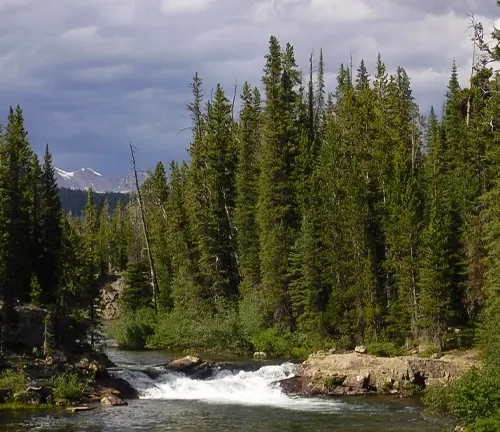
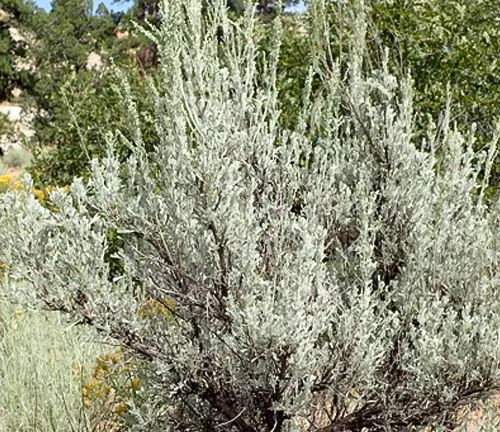
Fauna
- Grizzly Bear (Ursus arctos horribilis): The Gallatin National Forest is home to the majestic Grizzly Bear, a symbol of wilderness and a crucial species for the ecosystem. These bears play a vital role in nutrient distribution and help maintain the health of the forest environment.
- Canada Lynx (Lynx canadensis): The elusive Canada Lynx, with its distinctive tufted ears, thrives in the forest’s colder, higher elevations. Their presence is a key indicator of a healthy, balanced ecosystem, particularly in snowy, dense forest habitats.
- Bald Eagle (Haliaeetus leucocephalus): As America’s national bird, the Bald Eagle is a spectacular sight in Gallatin National Forest. These majestic raptors are often found near rivers and large bodies of water, playing an important role in the food chain.
- Gray Wolf (Canis lupus): The Gray Wolf, once nearly eradicated from the region, has made a significant comeback. Their presence in the ecosystem helps control deer and elk populations and contributes to ecological balance.
- Bighorn Sheep (Ovis canadensis): Known for their impressive curved horns, Bighorn Sheep are a common sight in the mountainous regions of the forest. They are an important species for understanding mountain ecosystems and wildlife management.
- Moose (Alces alces): The largest of the deer family, Moose are frequently seen in the forest’s marshy and riparian areas. Their preference for aquatic plants makes them a unique component of the forest’s biodiversity.
- Peregrine Falcon (Falco peregrinus): Known for their incredible speed and hunting prowess, Peregrine Falcons in Gallatin National Forest are a testament to successful conservation efforts, having rebounded from near extinction.
- Elk (Cervus canadensis): The Elk herds of Gallatin are a vital part of the ecosystem, influencing vegetation patterns and providing a key food source for predators. Their migration patterns and behaviors are crucial for ecological studies.
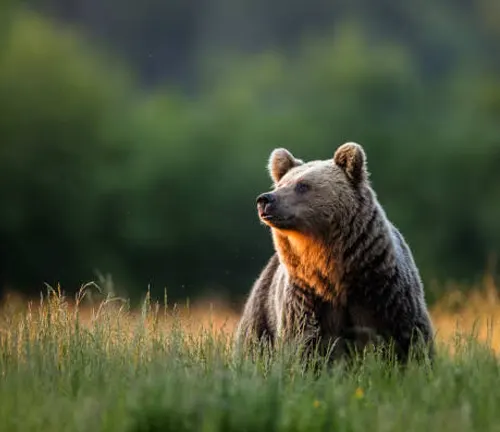

Attractions in Gallatin National Forest
Granite Peak: Standing at 12,799 feet, Granite Peak is not only the highest point in Montana but also a major attraction within the Gallatin National Forest. It offers a challenging climb for experienced mountaineers and, once summited, provides breathtaking panoramic views of the surrounding wilderness. The journey to the peak is as rewarding as the destination itself, featuring diverse landscapes and opportunities to encounter local wildlife.
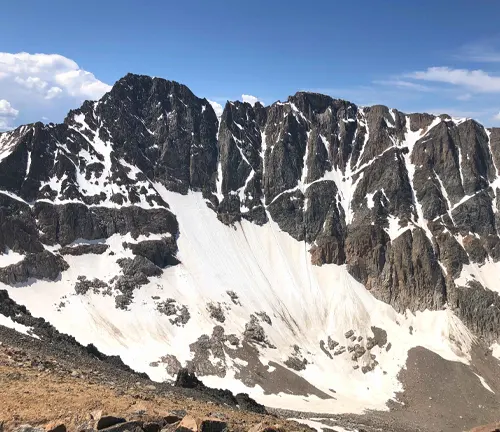
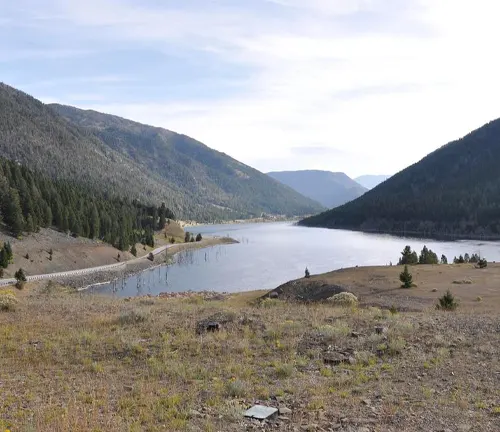
Quake Lake: Formed by the 1959 earthquake, Quake Lake is a geological marvel and a poignant reminder of nature’s transformative power. Visitors to this lake can learn about the seismic event at the Quake Lake Visitor Center and enjoy fishing, boating, and bird-watching. The lake’s serene setting and its dramatic origin story make it a unique spot for both relaxation and education.
Absaroka-Beartooth Wilderness: As part of the larger Custer-Gallatin National Forest, the Absaroka-Beartooth Wilderness offers a pristine natural area for backcountry adventures. With its high-altitude plateaus, stunning mountain views, and hundreds of lakes, this wilderness area is a paradise for hikers, backpackers, and nature photographers seeking to immerse themselves in unspoiled nature.
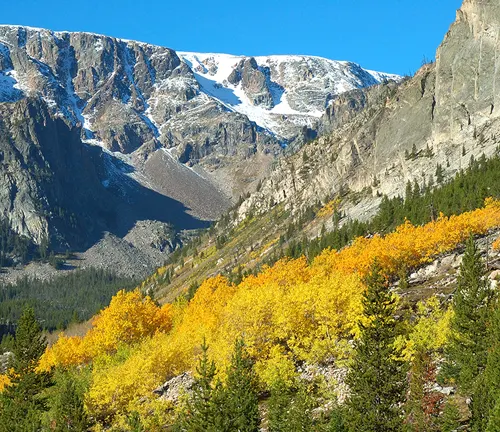

Bridger Bowl Ski Area: Renowned for its excellent skiing conditions, Bridger Bowl Ski Area is a highlight for winter sports enthusiasts visiting Gallatin National Forest. The area boasts a range of slopes to suit all skill levels, from beginners to advanced skiers, all set against the spectacular backdrop of the Rocky Mountains.
Hyalite Canyon: A favorite among locals and visitors alike, Hyalite Canyon offers a multitude of recreational opportunities. From scenic drives and picnicking to more adventurous activities like rock climbing and ice climbing, the canyon is a showcase of the forest’s diverse landscapes and recreational offerings.
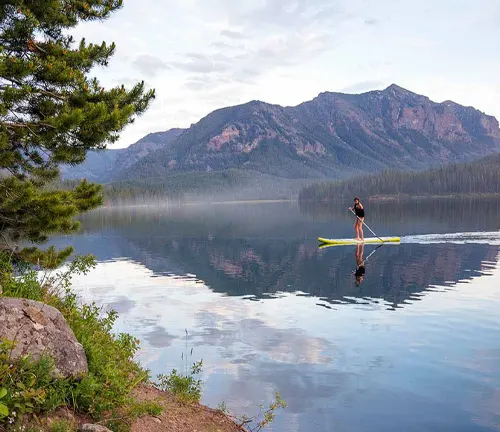

Raptor Migration Project at Bridger Mountains: This project offers a unique opportunity to observe the largest known golden eagle migration in the United States. Visitors can witness these majestic birds, along with other raptor species, as they migrate through the area, making it an unforgettable experience for bird watchers and nature enthusiasts.
Yellowstone River Tributaries: The tributaries of the Yellowstone River in Gallatin National Forest, such as the Gallatin and Madison Rivers, are attractions in their own right. Renowned for their fly-fishing opportunities, these rivers draw anglers from around the world looking to catch trout in a picturesque setting.
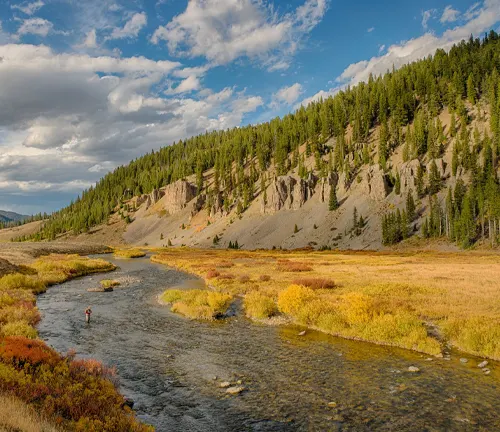
Each of these attractions contributes to the allure of Gallatin National Forest, offering visitors a blend of adventure, natural beauty, and unique ecological and geological insights. Whether seeking thrilling outdoor activities or peaceful encounters with nature, the forest provides an array of experiences for all interests and ages.
Recreational Activities in Gallatin National Forest
- Hiking and Backpacking: Gallatin National Forest offers a network of over 2,290 miles of trails, catering to hikers and backpackers of all skill levels. From short day hikes to challenging multi-day backpacking trips, these trails traverse through diverse landscapes, including lush forests, alpine meadows, and rugged mountain terrains. The forest’s well-maintained trail system provides ample opportunities for visitors to explore its natural beauty, encounter wildlife, and enjoy breathtaking vistas.
- Fly Fishing: The forest is renowned for its exceptional fly fishing, particularly in the rivers that are part of the Greater Yellowstone Ecosystem. Anglers from around the world are drawn to the Gallatin, Madison, and Yellowstone Rivers for their abundant trout populations, including the native Yellowstone cutthroat trout. The pristine waters set against the backdrop of the forest make fly fishing here not just a sport but a serene communion with nature.
- Mountain Biking: Mountain biking enthusiasts find a haven in Gallatin National Forest, with trails that offer varying degrees of difficulty and terrain. The trails provide a thrilling ride through scenic landscapes, with opportunities to witness the forest’s flora and fauna. The diversity of trails ensures that both novice riders and experienced mountain bikers can find routes that challenge their skills and endurance.
- Winter Sports: When the forest is blanketed in snow, it transforms into a winter wonderland offering a range of activities. Cross-country skiing and snowshoeing are popular ways to explore the forest’s winter beauty in a more tranquil setting. For those seeking more adrenaline, snowmobiling on designated trails offers an exhilarating way to experience the vastness of the winter landscape.
- Wildlife Watching: Gallatin National Forest is a hotspot for wildlife enthusiasts, offering chances to observe a variety of animals in their natural habitat. From spotting grizzly bears and gray wolves to watching herds of elk and bighorn sheep, the forest provides ample opportunities for wildlife photography and bird watching, especially for raptors during migration seasons.
- Camping: With nearly 40 campgrounds, the forest caters to all camping preferences, from backcountry camping for those seeking solitude to developed campgrounds with amenities. Camping in Gallatin National Forest allows visitors to fully immerse themselves in the wilderness, whether it’s for a night under the stars or an extended stay amidst nature.
- Rock Climbing and Ice Climbing: The varied geological features of the forest provide numerous opportunities for rock climbing and ice climbing. Areas like Hyalite Canyon are particularly popular, offering routes for climbers of various skill levels. These activities not only challenge enthusiasts physically but also offer unique perspectives of the forest’s landscapes.
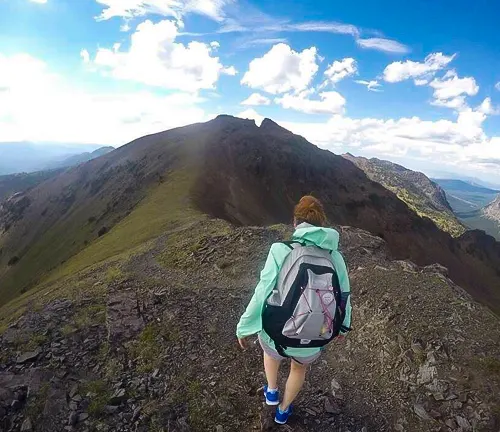
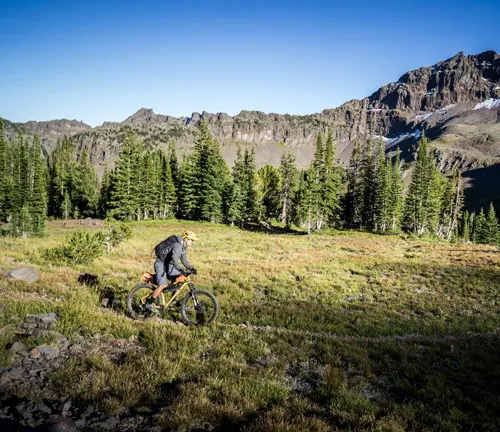
Each of these activities in Gallatin National Forest offers a unique way to engage with and appreciate the natural environment. Whether it’s through adventurous sports or more leisurely pursuits, visitors can find numerous ways to connect with the outdoors and experience the myriad wonders of this expansive forest.
Different Facilities and Amenities in Gallatin National Forest
- Campgrounds: Gallatin National Forest boasts nearly 40 campgrounds, accommodating a wide range of camping experiences. These campgrounds vary from primitive, back-to-nature sites to more developed areas with amenities like restrooms and picnic tables. They provide an ideal base for exploring the forest, whether it’s for hiking, fishing, or simply enjoying the tranquility of nature. Some campgrounds are situated near water bodies, offering easy access for fishing and boating, while others are nestled in quiet, forested areas perfect for wildlife watching.
- Picnic Areas: Scattered throughout the forest are numerous picnic areas, ideal for families and groups to enjoy a meal surrounded by nature. These areas are equipped with tables and often have grills, providing a comfortable setting for a daytime outing. Located near trails, rivers, or scenic viewpoints, these picnic spots are not just about food but also about immersing oneself in the forest’s natural beauty and serenity.
- Hiking Trails: The forest features an extensive network of hiking trails, catering to all levels of experience and endurance. From easy, family-friendly walks to challenging backcountry treks, these well-marked trails lead to stunning vistas, serene lakes, and through diverse ecosystems. Trailheads are usually well-equipped with parking areas, information boards, and sometimes restrooms, making them convenient starting points for day hikes or longer backpacking adventures.
- Visitor Centers: The visitor centers in Gallatin National Forest are invaluable resources for visitors. Staffed by knowledgeable personnel, these centers provide information on trail conditions, wildlife activity, camping regulations, and more. They often feature educational exhibits about the forest’s ecology, geology, and history, enhancing visitors’ understanding and appreciation of the area.
- Fishing Access Sites: Recognizing the popularity of fishing in the forest, numerous fishing access sites have been established, especially along the major rivers and streams. These sites offer anglers easy access to the water, and some are equipped with facilities like boat ramps, parking areas, and occasionally restrooms, making them ideal for a full day of fishing.
- Rental Cabins: For those looking for a more comfortable stay, Gallatin National Forest offers several cabins for rent. These cabins range from rustic to more modern facilities, providing a unique way to experience the forest without forgoing basic comforts. Nestled in scenic locations, they offer a peaceful retreat and a different perspective on the forest environment.
- Wildlife Viewing Areas: Designated wildlife viewing areas are scattered across the forest, offering visitors the chance to observe animals in their natural habitat. These areas are carefully chosen to minimize human impact on wildlife while maximizing viewing opportunities. They are often equipped with interpretive signs that provide information about the species commonly seen in the area.
- Winter Recreation Sites: During winter, specific areas of the forest are transformed into hubs for winter sports. These include designated cross-country ski trails, snowshoeing paths, and snowmobiling routes. Facilities like warming huts can be found in some of these areas, providing comfort and safety for winter recreation enthusiasts.
Each of these facilities and amenities enhances the visitor experience in Gallatin National Forest, catering to a wide array of interests and ensuring that time spent in the forest is both enjoyable and convenient. Whether it’s through camping, hiking, fishing, or simply relaxing in nature, these amenities help visitors connect with and appreciate the natural wonders of the forest.
Tips and Advice for Visiting Gallatin National Forest
- Prepare for Varying Weather Conditions: The weather in Gallatin National Forest can be unpredictable, with temperatures often dropping significantly at night, even during summer. Visitors should dress in layers and be prepared for sudden weather changes. Bringing rain gear, sturdy footwear, and additional warm clothing is essential, especially if you plan to explore higher elevations or stay overnight.
- Practice Wildlife Safety: The forest is home to a variety of wildlife, including bears and moose. It’s important to maintain a safe distance from all wildlife and never feed them. When hiking or camping, be bear-aware by storing food in bear-proof containers and understanding what to do in the unlikely event of a bear encounter. Carrying bear spray and knowing how to use it is recommended.
- Respect Fire Regulations: Be aware of current fire conditions and restrictions. During dry periods, open fires may be prohibited. If campfires are allowed, ensure they are fully extinguished before leaving the site. Never leave a fire unattended and follow all guidelines to prevent forest fires.
- Leave No Trace: Preserving the natural beauty of the forest is crucial. Practice Leave No Trace principles by packing out all trash, staying on designated trails to protect fragile ecosystems, and camping only in designated areas. Respect the natural environment and its inhabitants by minimizing your impact.
- Stay Informed About Trail and Road Conditions: Before embarking on your trip, check the latest trail and road conditions. Some areas might be inaccessible due to seasonal closures or maintenance work. The forest’s ranger stations or visitor centers can provide up-to-date information.
- Plan Your Activities According to Your Skill Level: Gallatin National Forest offers a range of activities from easy hikes to challenging backcountry adventures. Choose activities that match your experience and fitness levels. Overestimating your ability can lead to dangerous situations, especially in remote areas.
- Carry a Map and Compass/GPS: Even on well-marked trails, it’s easy to get disoriented in the vast wilderness. A map and compass, or a GPS device, are essential tools, especially if venturing into less traveled areas. Ensure your GPS is fully charged and consider carrying a backup power source.
- Check for Permits and Regulations: Some activities, like fishing and certain types of camping, may require permits. Familiarize yourself with the forest’s regulations and obtain any necessary permits ahead of time. This not only ensures a hassle-free visit but also helps in conserving the area for future visitors.
- Stay Connected and Safe: Cell phone reception can be unreliable in the forest. Inform someone about your travel plans and expected return time. For longer trips, consider carrying a satellite phone or a personal locator beacon for emergencies.
By following these tips and being prepared, visitors can ensure a safe, enjoyable, and environmentally responsible experience in Gallatin National Forest. The forest’s natural beauty and recreational opportunities are there to be enjoyed, but they also need to be respected and preserved.
Recommendation
For a truly immersive experience, embark on a hike in the Absaroka-Beartooth Wilderness. This area showcases the forest’s remarkable biodiversity and offers a chance to witness its stunning landscapes and wildlife in their natural habitat.
Conclusion
The Custer-Gallatin National Forest is more than just a collection of trees and trails; it’s a living, breathing ecosystem that invites exploration and demands respect. Its vast landscapes and rich biodiversity make it a precious jewel in America’s natural crown, a place where adventure and tranquility coexist.
FAQs
- What are the most popular hiking trails in Gallatin National Forest?
The forest offers a variety of trails, but some of the most popular include the Hyalite Peak Trail, which offers stunning views and access to alpine lakes, and the Mystic Lake Trail, known for its scenic beauty and accessibility. - Can I bring my dog when visiting the forest?
Yes, dogs are allowed in Gallatin National Forest. However, they must be kept on a leash in developed recreation areas and campgrounds. It’s important to respect wildlife and other visitors by managing your pet responsibly. - Is backcountry camping permitted in the forest?
Yes, backcountry camping is allowed. However, it’s essential to follow Leave No Trace principles to minimize your impact on the environment. Make sure to check any specific regulations or restrictions in the area you plan to visit. - Are there any restrictions or permits required for fishing?
Fishing in the forest requires a Montana state fishing license. There may be specific regulations on catch limits and seasons, so it’s advisable to check the current rules before heading out. - What kind of winter activities can I do in the forest?
During the winter months, Gallatin National Forest offers activities like cross-country skiing, snowshoeing, and snowmobiling. The area around West Yellowstone is particularly popular for snowmobiling. - Are there educational programs or guided tours available in the forest?
Yes, the forest often hosts educational programs, especially during the summer months. There are also guided tours available, which can include wildlife watching, hiking, and historical tours. Contact the local ranger district offices for more information. - What should I do if I encounter a bear in the forest?
If you encounter a bear, do not run. Stay calm, speak in a low, calm voice, and slowly back away. Make sure to carry and know how to use bear spray as a precaution, especially when hiking in remote areas. - How can I learn more about the current conditions in the forest?
The best way to get current information is to contact the nearest ranger district office. They can provide updates on trail conditions, weather forecasts, and any wildlife alerts or restrictions in place.
The Gallatin National Forest, a landscape of awe and wonder, invites you to explore its hidden treasures and untamed wilderness. Whether you’re seeking adventure or tranquility, this forest offers an escape into nature’s embrace, a chance to reconnect with the wild and rediscover the beauty of the natural world. Come, experience the Gallatin, and carry its memories with you forever.


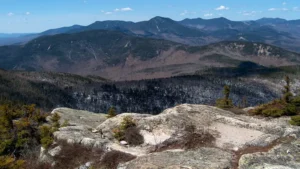
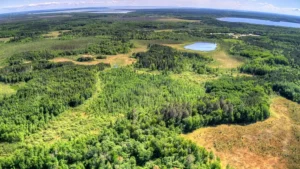

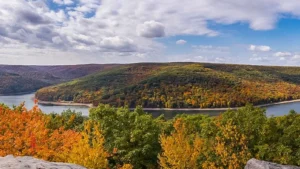
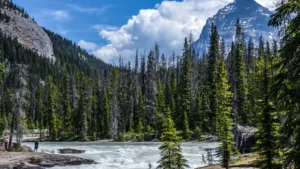



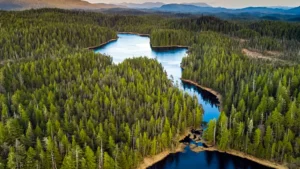


Leave your comment